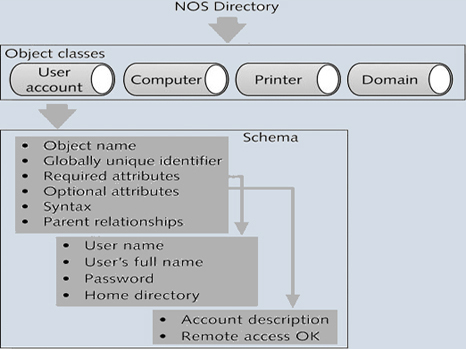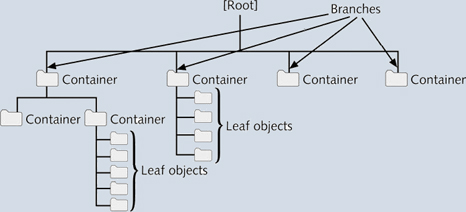| HOME | TUTORIALS | PAPERS | LEARNING OBJECTS | DEVELOPMENTS | RESEARCH RESOURCES | CONTACTS |
| Identifying and Organizing Network Elements |
Recent versions of all popular NOSs use directories that adhere to standard structures and naming conventions set forth by LDAP (Lightweight Directory Access Protocol). LDAP is a protocol used to access information stored in a directory. By following the same directory standard, different NOSs can easily share information about their network elements. A directory’s schema may contain two types of definitions: classes and attributes. Classes identify what type of objects can be specified in a directory. User accounts and printers are examples of object classes.
To better organize and manage objects, a network administrator places objects in containers, or OUs (organizational units). OUs are logically defined receptacles that serve only to assemble similar objects. In the LDAP standard, directories and their contents form trees. A tree is a logical representation of multiple, hierarchical levels within a directory. The term “tree” is drawn from the fact that the whole structure shares a common starting point (the root) and from that point extends branches (or containers), which may extend additional branches, and so on. Objects are the last items in the hierarchy connected to the branches and are sometimes called leaf objects.
|
| [ Start Over ] | < Back | Page 6 of 13 | Next > | Quiz |

